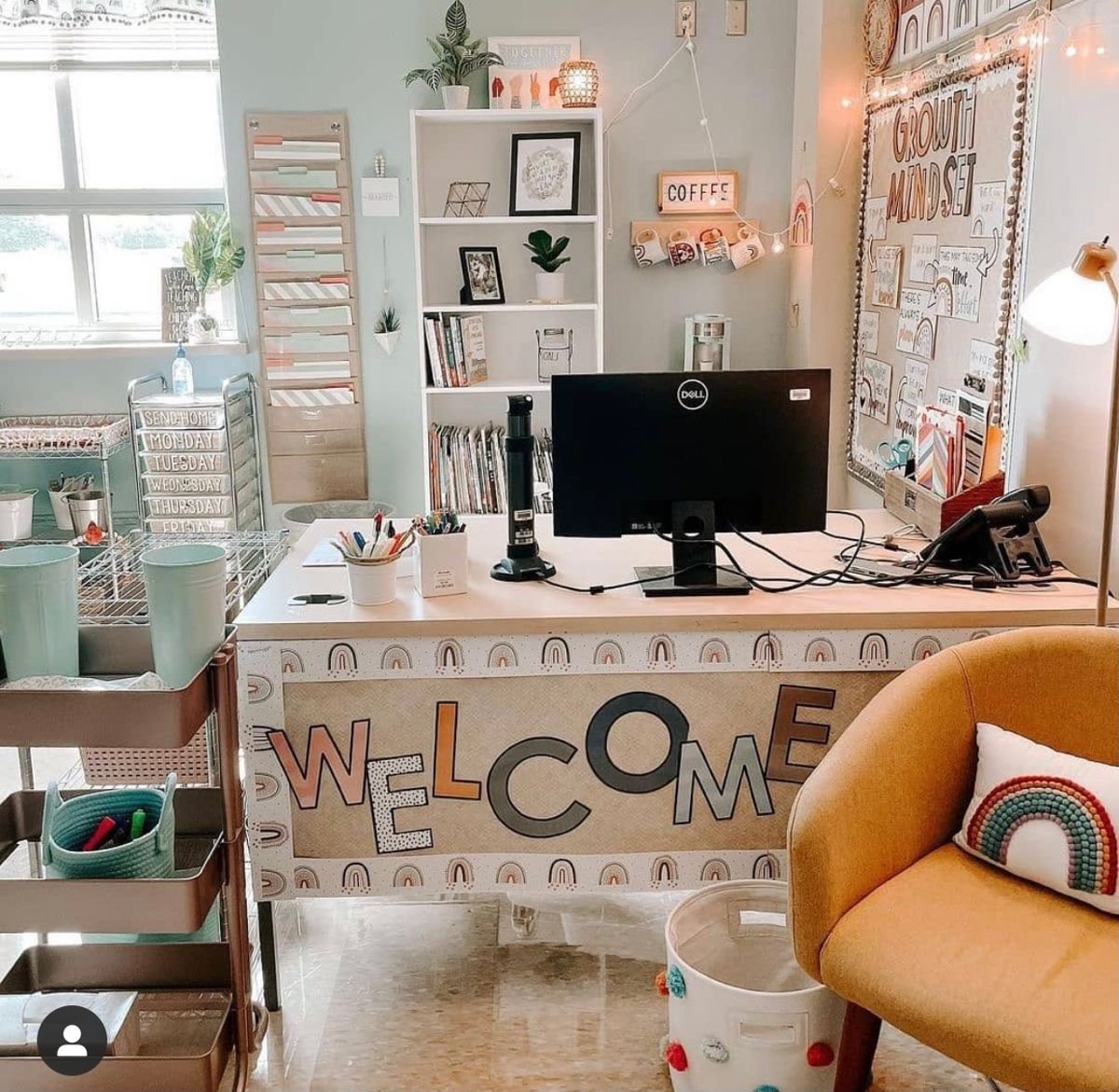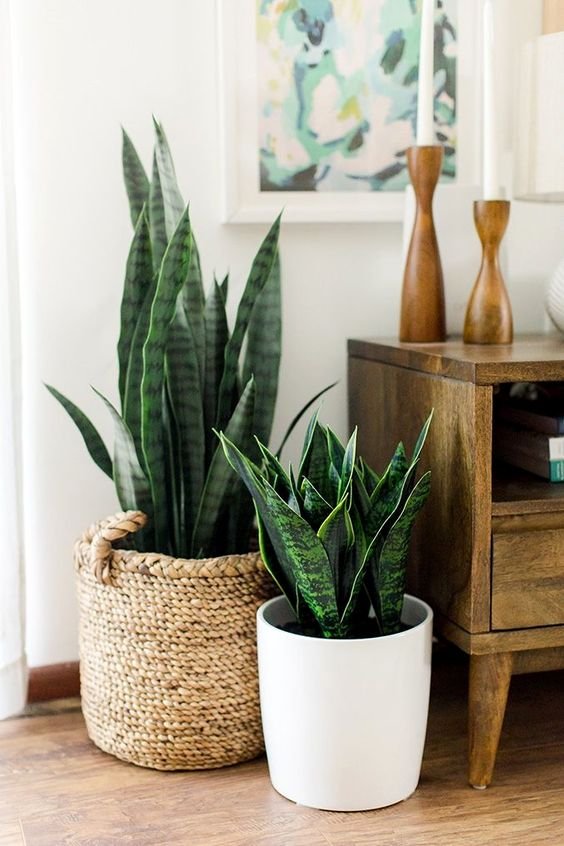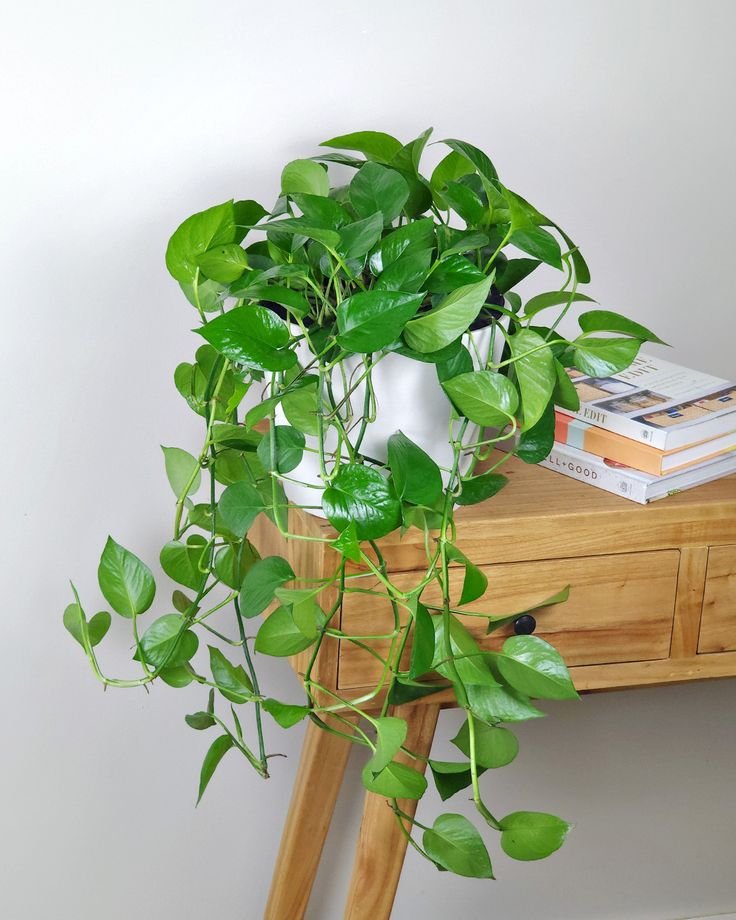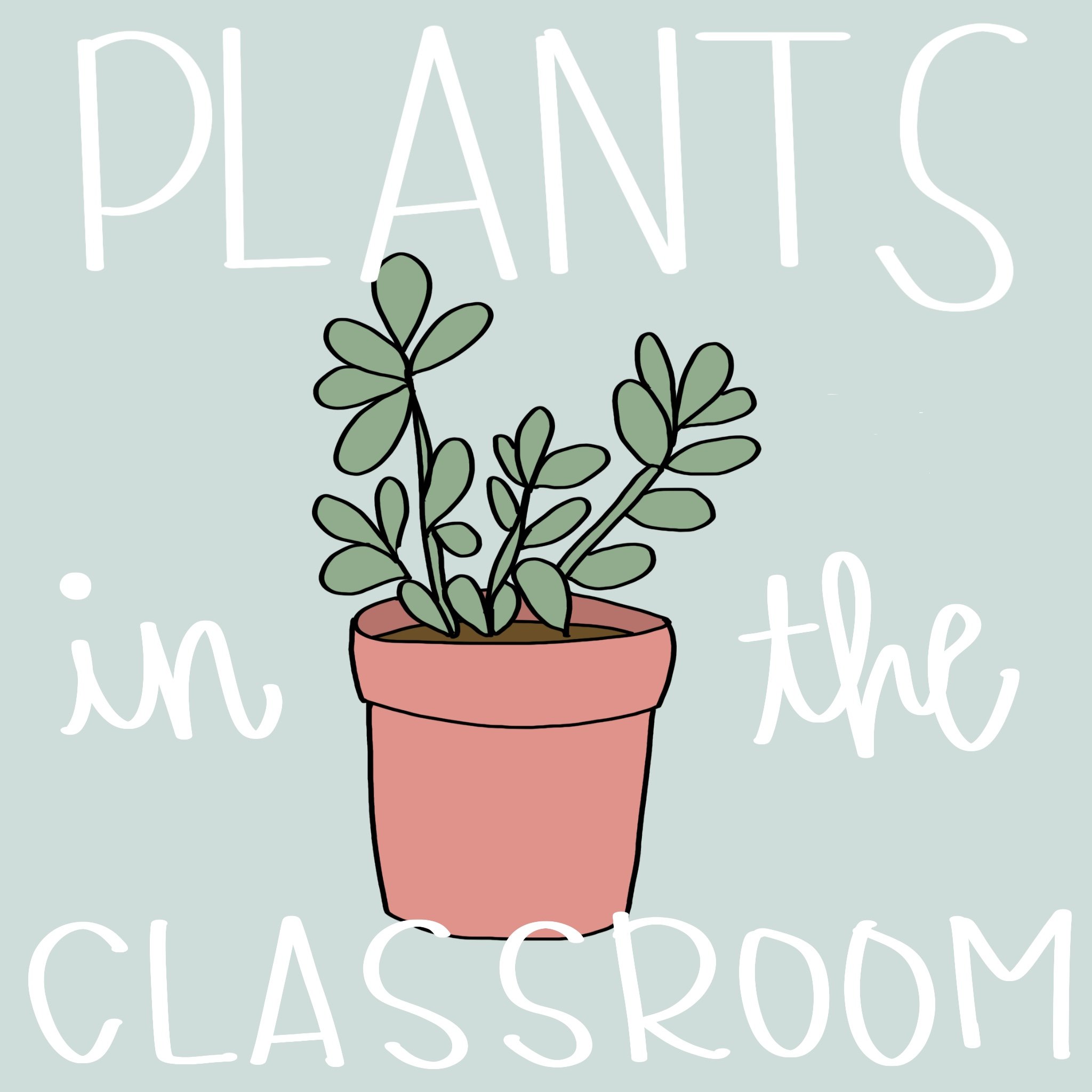What are some easy plants to have in classroom?
Oh man, where my plant people at?! I love the way plants can bring warmth and calm to a space. There is just something about adding nature that makes any room feel more inviting. Not to mention all of the air purifying benefits!
So it is a NO BRAINER for me to bring in some plants to my classroom this year. However… the room only has one tiny window. So, to the internet (and other teachers) I went to find out the BEST plants for the classroom. (Particularly one with low light… and maybe a few bright light options too for my lucky window-getters). In this blog I will share my top plant suggestions (and where to buy them!) for low light classrooms, medium/bright classroom, pot suggestions, classroom inspiration, and general tips and things to think about. Let’s get started!
Plants for Low Light Classrooms
Plants for Medium to Bright Light Classrooms
Plants to Avoid in the Classroom
Plants that Thrive in Low Light Classrooms
Snake Plants
Pros: This plant is known for surviving no matter the amount of light and is VERY low maintenance. (Have you seen the starfish variety? So cool!)
Dark Classroom Friendly? Yes!
Things to Consider: This plant can be toxic if eaten so probably not the best for a young classroom or one where an animal could get to the plant. Also, they can get a “barb” at the end, but you can snip the sharp part off and the plant will still be happy!
How to Keep it Alive: Don’t overwater!! Like, we’re talking no more than 1-2 times a month. You will want to make sure your pot drains well (putting some rocks at the bottom and making sure the pot has good drainage holes will be key). No standing water for this guy!
ZZ Plants
Pros: The ZZ Plant is a low-maintenance plant so it doesn’t require much attention. Similar to the snake plant, it can be happy no matter the amount of light! I also personally think this one is SO cute - it has those rich waxy green leaves and just a cute shape. Definitely a pro for me.
Dark Classroom Friendly? Yes!
Things to Consider: This one does grow ever so slightly faster than the snake plant so it will need to be repotted when the roots start growing above the soil line.
How to Keep it Alive: Don’t overwater!! Same as snake plant - only 1-2 waterings per month. If the leaves start to fade yellow, you’ve gone too far! It also doesn’t love direct sunlight so watch the leaves for signs of sun-bleaching.
Pothos Plants
Pros: Pothos are known for being among the best air purification plants and a quick grower! They also can create fun vines that you can guide around the room.
Dark Classroom Friendly? Yes… but the less light the less full - just a heads up.
Things to Consider: When they get less light, they tend to have a “leggy” appearance and variegated varieties may lose some of the color contrast. This one can also be toxic so consider your student behaviors before bringing it into the classroom.
How to Keep It Alive: Don’t overwater!! A tip for this one is to allow the top couple of inches of the soil to dry out before watering again (typically every 1-2 weeks). The root area of the soil likes to stay moist but not swimming. Brown or wilting means the plant needs more water; yellow leaves may indicate over watering.
Spider Plants
Pros: These are the perfect plant to have in a hanging basket or macrame plant hanger. They also frequently have spider babies that you can replant or even send home with students.
Dark Classroom Friendly? Yes.
Things to Consider: If you like a more contained, neat plant - this one may not be the best fit for you. It can get a very spindly/”webby” look which can be fun but also not always predictable.
How to Keep It Alive: Don’t overwater!! Water only when the soil is dry to touch (usually once every 2 weeks). You will want to prune your spider plant once a year in spring or summer by cutting discolored and dead leaves or unwanted spiderettes at the very base of the plant.
Lucky Bamboo Plants
Pros: If figuring out when to water a plant stresses you out, this may be a great option! You can literally grow these IN water so you can tell when you need to add more water. Also… they are so cute.
Dark Classroom Friendly? Yep!
Things to Consider: While you can pot these in soil, the roots must always be covered in water so I’d be worried about the potential for mold.
How to Keep It Alive: Keep your lucky bamboo out of direct sunlight and make sure that the roots of the bamboo are always covered with water. You can also prune any thin or crooked shoots 1-2 inches from the main stalk.
Chinese Evergreen Plants
Pros: These are known for doing well with even just flourescent lighting (which might be why you recognize this style from your local dentist office).
Dark Classroom Friendly? Yep!
Things to Consider: This one will need to be watered a bit more regularly than the previous two plants on the list. The goal is to keep the potting mix consistently moist, but never too wet or soggy.
How to Keep It Alive: Keep the soil moist, but well drained. Monitor the leaves for yellow spots signaling too much sun or water. Prune yellow and brown leaves after growing season.
Dracaena Plants (tall)
Pros: If you are looking for a hardy, taller plant, this may be the right fit for you (the Janet Craig one grows super tall).
Dark Classroom Friendly? Yes(ish) - some varieties can handle low light and some like medium to bright light so make sure you check when considering this one.
Things to Consider: These can grow up to 10 feet tall so they may need occasional pruning from you.
How to Keep It Alive: They like to be watered once every 1-2 weeks and kept in a place with bright but not direct sunlight. When the roots grow above the soil, it’s time to re-pot!
Fake Plants
Pros: OK, hear me out - my hair stylist mixes in fake varieties of the harder-to-grow plants (like string of pearls) with live options and it adds so much dimension to her indoor plants. Let’s be honest… you are already responsible for keeping humans alive so this may be a way to add some color and texture without adding a lot to your plate.
Dark Classroom Friendly? Ummm… YEAH.
Things to Consider: They can get dusty and the color can fade over time BUT you can always spruce them up with a damp cloth.
How to Keep It Alive: Ummm… don’t water it… like, at all.
HONORABLE MENTION: Air Plants
Pros: These are SO unique and because they don’t need soil or pots, they can be a really fun option to add to a classroom.
Dark Classroom Friendly? Yes!
Things to Consider: They need to be dried upside-down for 10 minutes after they are watered before they are put back, but they only need to be watered once every one to two weeks, or up to three weeks in the winter.
How to Keep It Alive: They like to be watered once every 1-2 weeks and kept in a place with bright but not direct sunlight. When the roots grow above the soil, it’s time to re-pot!
Plants that Need Medium to Bright Light Classrooms
Aloe Plants
Pros: Aloe Plants are so cute and frequently creates aloe “pups” that pop up around the mother plan over time. You can perform “surgery” on these to separate and repot!
Dark Classroom Friendly? Not really - this one likes bright but not direct sunlight.
Things to Consider: This plant is toxic when ingested and can be temperamental about light and water needs.
How to Keep It Alive: Use a succulent potting soil and consider using a porous pot like terra cotta to keep it well drained. Water the plant heavily about once every two weeks, waiting until the soil dries out fully.
Elephant Bush Plants
Pros: This is like the tougher, leggier, faster-growing but smaller cousin of a jade plant (SO CUTE) and does well perched on a window ledge.
Dark Classroom Friendly? Not really - this one likes bright but not direct sunlight.
Things to Consider: They do like access to fresh air so they will be happiest if near a window that you can open from time to time. Tbh, me too.
How to Keep It Alive: The Elephant Bush plant likes succulent potting soil and water it only when soil is dry to touch.
Jade Plants
Pros: These may be my favorite succulents as far as looks. The plump leaves are just SO cute.
Dark Classroom Friendly? Not really - this one likes bright but not direct sunlight.
Things to Consider: Because this is a succulent, it can be a little temperamental at times.
How to Keep It Alive: Don’t overwater!! Plant in a pot that is a little wider than you think the plant needs in a cactus/succulent soil mix for better draining. Put the pot by a bright window and water when the top of the soil is dry to touch. You can also wipe the leaves with a damp cloth every now and again to remove dust.
Friendship Plants
Pros: This plant has super unique coin-shaped leaves so it tends to be a student favorite.
Dark Classroom Friendly? Not really - this one likes bright but not direct sunlight.
Things to Consider: This one has low air purifying qualities if that is something that is important to you. The leaves also like to grow towards light, so you may need to occasionally rotate the plant.
How to Keep It Alive: They like to have their soil dry out completely before watering. When you stick your finger in one inch or deeper, and it still feels bone dry, you’re probably good for another watering.
Monstera Deliciosa Plants (tall)
Pros: This larger plant can bring a tropical vibe to the classroom and has unique leaves - like the easier to care for cousin of a fiddle leaf.
Dark Classroom Friendly? Not really - this one likes medium to bright but not direct sunlight.
Things to Consider: They do tend to like filtered water but you can get around this by leaving the water out overnight before using. Or you can just use regular water and monitor for plant health.
How to Keep It Alive: Water every 1-2 weeks, allowing soil to dry out between waterings. Expect to water more often in brighter light and less often in lower light.
Rubber Tree Plants (tall)
Pros: The leaves have such a neat shine to them and the latex sap can be used to make rubber! Bonus: NASA has even recommended its air-purifying properties.
Dark Classroom Friendly? Not really - this one likes medium to bright but not direct sunlight.
Things to Consider: They can grow quite tall so you will need to plan ahead as far as space and pots are concerned.
How to Keep It Alive: It is best to water your Rubber Tree every 1-2 weeks, allowing the soil to dry out between waterings.
HONORABLE MENTION: Fiddle Leaf Fig
Pros: They are stinking cute and very trendy. The size of the leaves brings so much fun and whimsy to an indoor space.
Dark Classroom Friendly? Not really - this one likes medium to bright but not direct sunlight.
Things to Consider: I can’t keep them alive and free of bugs. I have no idea why but they are my achilles heel. Hopefully you will have more luck??
How to Keep It Alive: Water it fairly consistently when the top two inches of soil are dry. They also like to be misted from time to time but not too much. You know… easy peasy.
Plants You Might Want to Avoid in a Classroom
High Pollen: sunflowers, daisies, chamomile, african violets, etc.
Skin Irritants: ferns, orchids, bonsai, ivy, yukkas, etc.
Toxic When Ingested (younger classrooms): peace lily and easter lily, dumb cane, philodendron, etc. NOTE: Some of the plants included on the lists above are harmful if ingested even if not noted so please consider the age and temperament in your classroom when considering adding a plant to your space.
Great Planter and Pot Options for Classroom Plants from Amazon
Here are some of my favorite planter options for your new plant babies! Click on the image to see more.
Classroom Inspiration: How to Style Classroom Plants
Spruce Up a Shelf: Whether you want to create a fully decorative space like this adorable arched shelf from target or you just want to bring some life and color to a supply shelf, low light plants could be just the ticket! (Here is a similar shelf on Amazon for a fraction of the price)
Make a Plant Center: If you have a really great window, it could be fun to make a plant station and have students that are in charge of taking care of the plants each week as part of your classroom jobs rotation. This is also a great way to monopolize window light for maximum plants!
Create Areas: You could use plants to visually divide up spaces without completely blocking sight lines.
Plant Life Cycle Study/Propagation Station: As your plants mature, many of them will create babies. Propagation is easier than you think! A quick google search will help you find simple ways to propagate. Not only is this an awesome opportunity to see the plant life cycle in action, but it also will multiply your plants without spending more money!
Want more inspiration? Check out my Pinterest board with alllll of my favorite plants and setups:
Final Thoughts and General Tips and Things to Consider
Have I convinced you to be a plant person now?? I truly think plants can add SO MUCH to a classroom - it’s like breathing a little life (literally) into the fluorescent lighting jungle. However, there are just a few more things I consider before beginning the investment of adding plants into my classroom:
Summer/Break Plans - As much as I would love to create a jungle in my classroom, I typically take plants home over the summer break to avoid… you know… them dying. So, I have to keep my number of plants to a transportable amount. (Some teachers ask summer school staff or custodians to take care of them or go to the school to tend to them. As we mentioned with some of the plants, they don’t require frequent watering but you will need to consider how warm your building might get over the break).
Allergy Considerations - Most of the plants included on these lists are low-allergy but it is always a good thing to check with parents at Back to School night to make sure you don’t have any students with specific allergies to your classroom plants. Often classroom plants won’t flower due to the lack of light which keeps the pollen amount limited. However, if you over-water and the soil stays too moist, that can also cause a flair up in mold. Just worth being mindful of!
Toxicity - Many decorative plants are toxic enough to make people sick if ingested. If you are in a classroom with younger children, always look into the toxicity of the plants before including them in your room. No matter your students’ ages, always consider behaviors as well.
Investment - Most of these plants only require water once they get going, but they start at all different price points, so do your research. Some nurseries will even give teachers discounts - so that’s worth asking when shopping around!
Consider the Pots You Use - You’re probably sick of hearing it by this point but plants NEED the soil to drain well. Make sure you factor that into your potting decisions as well as where you will set the plants in case of water leaks (I’m looking at you, bookshelves).
Ultimately, I think adding plants to the classroom is totally doable. Start small! Go by a local nursery or home depot and grab a cute tiny succulent or ask the workers which plant is low maintenance and best fits your lighting needs. Want something even more foolproof? Start with a fake plant :) I won’t tell.
Happy teaching!
Note: If you buy something through our links, we may earn an affiliate commission at no cost to you. Don’t worry. We only recommend things we truly like and want to share with you. Thanks so much for your support!

































